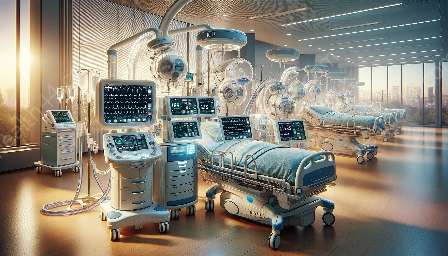The development of artificial kidney machines has significantly revolutionized the field of healthcare, playing a vital role in life support systems. These remarkable medical devices and equipment have changed the landscape of treatment for kidney diseases and associated conditions, offering hope and improved quality of life for countless individuals.
The Evolution of Artificial Kidney Machines
The concept of artificial kidney machines, also known as hemodialysis machines, has been a major breakthrough in medical technology. These machines are designed to perform the functions of a natural kidney, such as filtering waste products and excess fluids from the blood. The evolution of these machines has transformed the treatment of kidney failure and other related conditions, enabling patients to receive life-saving therapy on a regular basis.
Key Components and Functionality
Artificial kidney machines consist of several key components that work together to replicate the essential functions of a healthy kidney. The primary components include a dialyzer, blood tubing, and a dialysis solution delivery system. The dialyzer acts as the artificial kidney, facilitating the process of filtration and removing harmful substances from the blood. The blood tubing is responsible for transporting the patient's blood to and from the dialyzer, while the dialysis solution delivery system ensures the correct composition of the dialysis solution used during the process.
Integration with Life Support Systems
Artificial kidney machines are integral to life support systems, especially for patients with end-stage renal disease (ESRD) or acute kidney injury. These machines provide essential support for individuals whose kidneys are unable to perform their normal functions, effectively sustaining their lives by filtering waste products and regulating electrolyte balance. The seamless integration of artificial kidney machines into life support systems has significantly enhanced the ability to manage renal failure and related conditions, offering renewed hope for patients and their families.
Advancements in Medical Devices & Equipment
The development of artificial kidney machines represents a remarkable advancement in medical devices and equipment. Through continuous research and innovation, these devices have become more sophisticated and efficient, leading to improved outcomes for patients with kidney diseases. The integration of cutting-edge technology, such as advanced monitoring systems and automated control features, has enhanced the safety and efficacy of artificial kidney machines, setting new standards for renal care and treatment.
Improved Patient Experience and Quality of Life
Artificial kidney machines have not only transformed the treatment of kidney diseases but have also significantly improved the overall experience and quality of life for patients undergoing dialysis. The ability to receive regular dialysis treatments through these machines has allowed many individuals to maintain active and fulfilling lifestyles, despite the challenges posed by kidney failure. Furthermore, the portability and convenience of modern artificial kidney machines have enabled patients to undergo dialysis in various settings, including their own homes, offering greater independence and flexibility in managing their healthcare needs.
Future Innovations and Impacts
The future of artificial kidney machines holds promising prospects for further innovations and impacts on healthcare. Ongoing research and development efforts are focused on creating more advanced and efficient systems that not only mimic the functions of a natural kidney but also address additional aspects of renal support, such as improved biocompatibility and enhanced patient safety. These advancements are expected to shape the future of renal care, offering new possibilities for personalized and optimized therapy for patients with kidney diseases.


